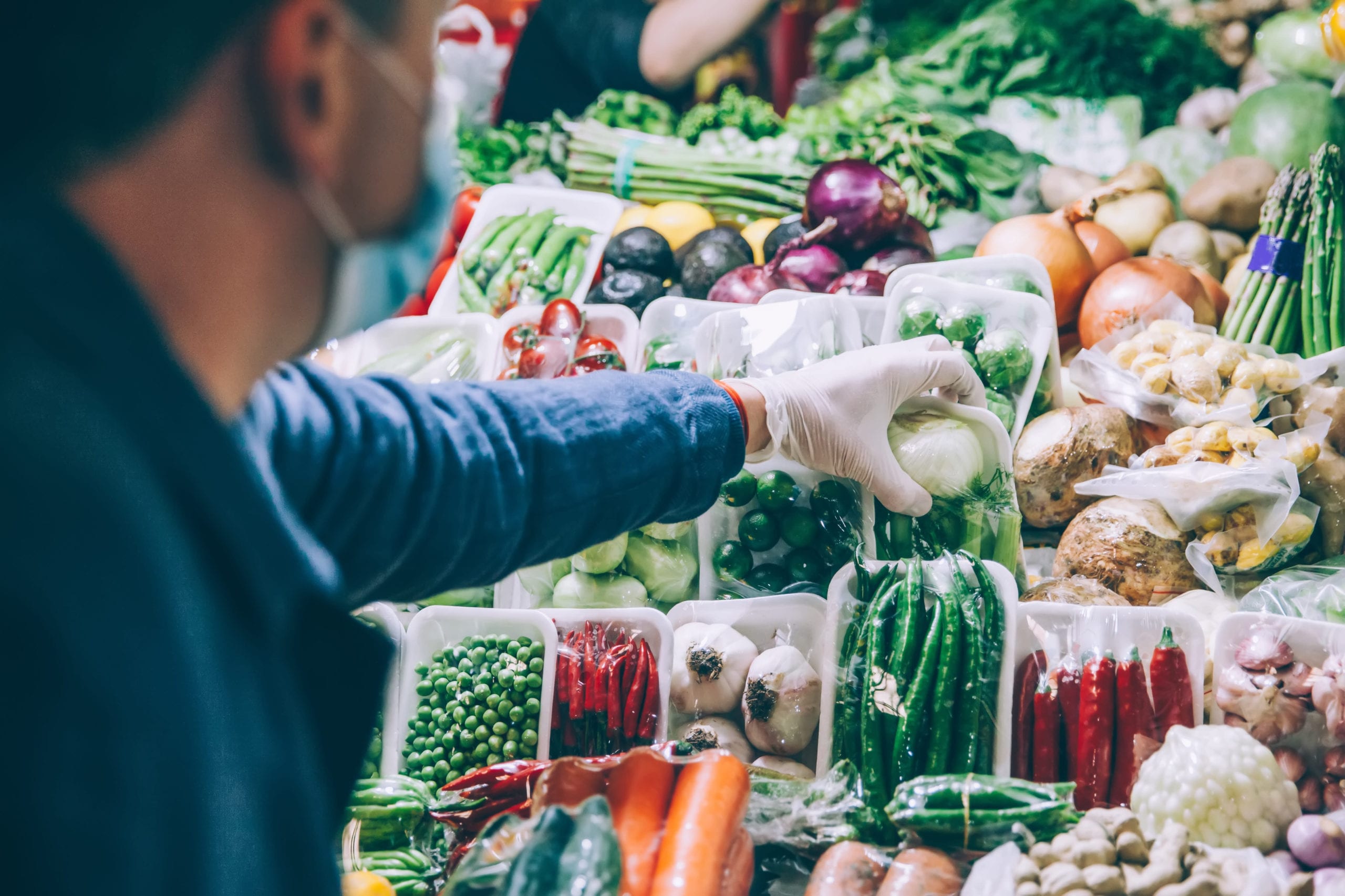[ad_1]
For many U.S. shoppers, the coronavirus pandemic was the push they needed to stock their pantries by browsing online instead of store aisles.
If the online shopping habit sticks — even for a percentage of the new or more frequent customers — it could represent a meaningful shift in an industry that’s been slow to go digital.
Only about 3% or 4% of grocery spending in the U.S. was online before the coronavirus outbreak, according to research by consulting firm Bain & Company. That trend has lagged behind many other parts of the world, despite major investments by Walmart and Amazon and the growth of third-party delivery services like Instacart, FreshDirect and Target-owned Shipt.
In other countries, such as South Korea, China and the United Kingdom, customers have been quicker to adopt online grocery shopping. In South Korea and China, 19% and 14% of grocery spending is online, respectively, according to analysis Bain, Kantar and Forrester. About 7% of grocery spending in the U.K. is online.
Prior to the pandemic, trends pointed upward in the U.S. One study by the Food Marketing Institute conducted by Nielsen projected that online grocery sales would reach $100 billion and make up as much as 20% of total grocery retail by 2025.
In recent weeks, however, online grocery shopping has accelerated that trend in the U.S., as shoppers have sought ways to avoid stores or at least limit visits. At the height of the pandemic, online grocery sales increased as much as fivefold to between 10% to 15% of total grocery sales, said Steve Caine, a retail expert and partner for Bain & Company.
As the crisis recedes, Caine said he expects online grocery sales to remain at a higher level of between 5% to 10%.
He said grocers and delivery services have seen a surge of app downloads and new signups, pushing customers beyond one of the big barriers to entry. Customers now have the familiarity to keep up the habit.
“I do think there will be a permanent shift in the adoption curve,” Caine said.
Research by McKinsey & Company predicts an increase, too. During the pandemic, online grocery sales increased to 8% to 10% of all grocery sales, but it predicts that will level off at 5% or 6%.
Steve Begley, a McKinsey partner in retail and grocery, and Vishwa Chandra, a McKinsey partner in e-commerce said customers will continue to do more grocery shopping online, since they’ve gotten more experience using the services and may still want to avoid heavily-trafficked places.
Strong demand has inspired U.S. grocers to rethink their e-commerce approach and “will force a wave of disruption through the channel that could help improve the economics over time,” they said in an email.
Magnifying pain points
The online grocery business has always been a logistical challenge, as it shifts more work and costs to grocers instead of customers. The pandemic has magnified those pain points.
As customers look for ways to avoid stores, demand has spiked, reducing the availability of delivery and curbside pickup slots. Some grocers have struggled to keep up with competing priorities: Cleaning stores, stocking shelves and fulfilling online orders — all while trying to keep workers socially-distanced.
Caine said growth of online grocery shopping in recent weeks could have been even larger, but it’s been “constrained by supply, not demand.”
“Anyone who has tried to go online and select a delivery slot knows that in many cases you’re waiting a couple weeks, if you can get one at all,” he said.
The demand tested even Walmart, the nation’s largest employer. The company hired 150,000 additional employees and plans to hire 50,000 more as it sees strong sales and copes with workforce challenges, such as employees getting sick with Covid-19, quarantining after exposure or not having child care. Online grocery shopping fueled its e-commerce growth prior the pandemic, according to company reports, but Walmart has not released current figures.
Target, which sells groceries as part of its assortment, said quarter-to-date its digital sales have more than doubled compared to the same time a year ago.
Before the pandemic, some of shoppers’ biggest complaints about buying groceries online were customer service-related, such as problems getting a desired delivery window or out-of-stock items. Customers have felt online prices are inflated, too, compared to the deals that they could find if they went to stores, according to Bain’s research.
For the short-term, customers have been more forgiving of flaws and “just happy to get it [an order],” he said.
“Our expectations are different right now than they would typically be pre-Covid-19.”
That tolerance may fade and sensitivity about prices return — especially as customers feel the effects of the economic downturn, he said.
“With unemployment, which is going to be high, people are not going to be as willing to pay for the convenience,” he said.

















